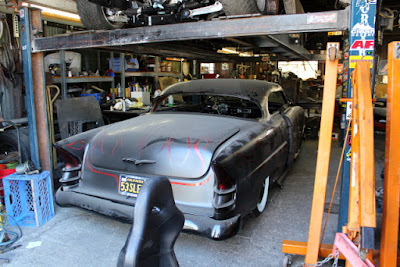When the old Spanish land grant Rancho Santiago de Santa Ana was partitioned in 1868, Columbus Tustin purchased 1300 acres of the land as a real estate venture to form "Tustin City." He laid out streets, established a school district and a post office, and attempted to persuade the Southern Pacific Railroad to have Tustin City as the terminus of their rail line. Unfortunately, the rail line did not arrive, so Tustin started giving lots away if people would agree to immediately build on the sites.
The free land giveaway worked and by 1880 Tustin City had three churches, a 50-room hotel, a bank and a horse-drawn trolly that connected Tustin to the rail line in Santa Ana.
Agriculture boomed in the area when it was discovered that Tustin was an ideal location for growing Valencia oranges, which were in high demand at the time. However, as the area population expanded, it became more profitable to grow houses than oranges; so Tustin's economic reliance on agriculture diminished.
In 2009 Tustin City was chosen by Forbes magazine as one of the top 25 towns to live in America. It was ranked in the top 10% for start-up and sole proprietorship businesses and at the time residents had one of the shortest commutes in Southern California.
During WW II a military anti-submarine airship base was established south of the City and two of the world's largest by volume free-span wooden buildings were constructed to house six dirigibles each. During construction, one of the buildings collapsed, but it happened at night and no one was injured. The base is now being converted into "Tustin Legacy," a 1,600-acre master planned community that has already been annexed by Tustin City.
 |
| Photographer Unknown |
 |
| Photographer Unknown |
 |
| Photographer Unknown |
As Tustin City grew there was a need for fire fighting equipment, so Columbus Tustin donated his 1912 Buick Touring Car to the Volunteer Fire Department and they converted it into a fire engine. The below picture of the 1912 Buick is representative of what the car looked like before the conversion. The converted fire truck is now on display in the Tustin City Museum.
 |
| Columbus Tustin |
 |
| Photographer Unknown |
For visitors that have a little extra time, the Tustin Museum gives out free walking tour maps of the historic area of town; so I spent part of the afternoon walking around the historic area looking at the various buildings. There were retail/office buildings, houses, churches, schools, and a blacksmith shop.
The school bell in front of the Department of Education Administration Building is the original bell that was cast in 1883 and used by the school district to sound the start of school classes.
On display in one of the retail buildings was a 1921 Nash Sport Phaeton that was found hidden a garage a few years ago. The vehicle is displayed in its original condition as found.
The original blacksmith building is now an automotive garage where I had the opportunity to visit with some young men building custom cars and hot rods.
Along the walking tour route there were a number of bells mounted on poles. When I asked a docent at the Tustin Museum about the bells, he explained that they were replicas of bells that were originally installed along the "El Camino Real" (Spanish for the Royal Road or The King's Highway).
The term "El Camino Real" is used to describe various roads in different states, but in California "El Camino Real" refers to the 600-mile road connecting Mission San Diego de Alcala to Mission San Francisco Solano just north of San Francisco Bay.
A sign in the museum explains that "El Camino Real" was one of the first state highways in California and because there were no road signs at the time, it was decided to place distinctive bells along the route so travelers could find their way. Each bell was placed atop an 11-foot high shepherd's crook, also called a 'Franciscan walking stick.' The first of 450 bells was unveiled on August 15, 1906 at the Plaza Church in Los Angeles."
Along the walking route there were also a number of blooming plants and even a lemon tree with ripe lemmons.
My last stop was the Marconi Automotive Museum. Unfortunately, the museum was closed to the public for a special event, so I had to settle for pictures of some exotic cars parked in front of the building.
BONUS HISTORICAL PICTURES
























No comments:
Post a Comment